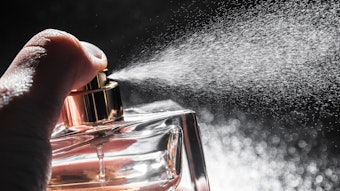Originally printed in the January 2009 issue of Perfumer & Flavorist magazine.
The advent of the New Year presents an opportunity to assess the state of the F&F industry and look into the long term for signs of what lies ahead. P&F magazine asked a number of industry experts representing flavorists, perfumers, executives, raw material suppliers and trend watchers to give us their unique short and long views. The results map a litany of challenges, opportunities and insights into future F&F innovation.
Consolidation In the wake of numerous small and large acquisitions over the past few months, consolidation of customers and suppliers remains on everyone’s minds. For example, a new report from Mintel Beauty Innovation “predicts a year of consolidation” for beauty companies in 2009. “[It] will be all about survival of the fittest in the beauty industry,” says head consultant Nica Lewis. “Consumers are going to demand real value for their money as well as visible results, and they will stick to the select number of brands they can truly trust.”
Ray Hughes, chairman, CEO and president of A.M .Todd adds, “[Consumer packaged goods] (CPG) company consolidation—this could speed up due to … economic issues, causing a decline in consumer spending and lack of organic market growth that can only be offset by acquisition of market share.”
Veteran flavorist John Wright, however, takes a slightly different stance. “Current wisdom dictates that consolidation of the flavor and fragrance industry still has a long way to go. I suspect this is greatly exaggerated. Many acquisitions in recent years have not even remotely met their financial targets, and in a tougher financial climate it will be harder to persuade wary bankers to provide finance. The recession will probably also hasten the segmentation of the flavor business into a high-end, quality driven sector, and a low-end ‘bang for the buck’ sector.
“Our industry has been obsessed in recent years with the need to be core-listed by major customers,” Wright continues. “Mergers and acquisitions have been seen as a good way to ensure inclusion on core lists. Core listing makes good sense for customers. Nobody can deal effectively with unfocussed submissions from dozens of suppliers. However, the opposite extreme is equally unattractive. All F&F suppliers have highly characteristic competencies and tend to formulate within a familiar comfort zone. No customer wants to be limited to one or two ‘take it or leave it’ choices. [It is] best to have a core list of three or four suppliers with an additional couple of challengers. This provides plenty of incentive for the suppliers and plenty of choice for the product developers. If our industry consolidates much further it will be impossible to have this level of relevant choice.”
Raw Materials
“During 2008, the flavor and fragrance industry saw a huge price rise in many of the commodities that are basic to our business,” says Hughes. “This, coupled with historic levels of energy costs, created margin erosion that was difficult to gain back through sales price increases or even a change to alternate sources. Finally, [there are] issues related to off-shore supply of certain materials and some key customer policies against the use of them. In 2009, the challenge to assure a stable sustainable supply of quality raw materials at a reasonable price will remain a priority.”
A group report from drom’s international marketing staff and perfumers Pierre Gueros, Delphine Jelk and Kevin Verspoor adds, “A negative consequence of the [current economic] crisis will be that, on the raw material side, there will be less development of new chemicals because of the price of testing.”
Wright adds, “Most F&F companies assume that raw material R&D in both flavors and fragrances will continue for many years along relatively conventional lines—ever more detailed analysis of nature and ingenuity in organic chemistry. These approaches still appear to be delivering the goods; GRAS 23 alone added over 170 new flavor ingredients! Closer examination tells a different story. Many of the additions are not exactly new, and many more simply represent small variations in structure. I suspect that each truly novel ingredient will become more and more difficult to find and, sadly, less and less game changing in its impact.”
On the other hand, Hughes presents some silver lining. “The major consumer CPG companies continue to search for ways to differentiate their brands from their competitors and private label products,” he says. “Flavor suppliers, for example, can assist with this effort by combining unique technologies such as taste modifying materials with proprietary encapsulation techniques to ‘insulate’ the customer brand from competition.”
The Economy
When asked about the challenges facing the industry, Jack Corley, executive vice president of Trilogy Fragrances, cites Whole Foods Market’s recent sales and earnings woes: “[It] underlies the environment many companies find themselves in today—that is, shrinking income statement values and financial liquidity. Industry after industry, company after company today is faced with this same dilemma. Many are fighting daily to survive. Many will not survive.”
Willy Palmer of Flavor & Fragrance Specialties adds, “[F]rugality, or maybe better said, fiscal discipline, for those companies with access to capital, suggests that our customers will be limiting their new product introductions since the investments needed to market those products are far riskier than investing in the marketing of existing products that have a proven track record in the marketplace. And if new product introductions are limited, it stands to reason that so are the opportunities to supply new flavors. The alternative growth opportunities for the flavor industry during this economic downturn will be driven by an ability to provide an economic benefit to customers rather than an ability to provide on-trend flavor profiles or unique delivery systems for those flavor profiles.”
The drom team also finds opportunity in this crisis: “There will be some negative consequences, but actually there could also be some positives. The concept that less is more will be a positive. Manufacturers will offer less expensive, smaller sizes of products in order to accommodate consumers during this financial crisis. The consumers are changing right now because of the crisis. … They choose a product because they really need it, it’s good for them, it’s good for the planet and it’s not polluting [the environment]. This crisis changes our thinking process. On a fine fragrance side, we have more and more launches every single year. Many of them include flankers or re-interpretations. It seems logical that because of the financial crisis there will be fewer launches in the [coming] years, and instead they will be more interesting.” Corley concludes, “Plan, plan, plan for the future. The economy will recover and when it does, you want to be ready to move quickly. Most personal care product development cycles can take six to 18 months—probably the length of this economic contraction!”
Meeting Customer Needs
“CPG companies continue to increase their dependence on flavor company product development resources,” says Hughes. “As a true product development partner, suppliers are asked to develop and even produce market-ready products that can be adopted quickly into the CPG distribution system.”
Willy Palmer of Flavor & Fragrance Specialties adds, “As the global economic conditions improve, the flavor industry must be prepared to absorb the increasing demands of its customers and be able to address the continuing evolution of demographic trends, namely the aging and growing diversity of populations. Individual flavor houses must have a well-established infrastructure to have the potential for long-term success. The burden of investing in product development, market research, quality assurance, and regulatory staffs has [long ago] begun to shift from the CPG companies to their suppliers. … Their reliance has, and will continue to grow. Therefore, it will be essential for flavor houses to continue to invest in staffs to support these disciplines and have as complete an understanding as possible of the challenges our customers face.”
Natural, Organic and Green
“The natural and organic market continues to grow at an 8–10% rate,” says Corley. “This may slow a bit over the next 18 months, but it will continue to outpace conventional personal care growth by a 3:1 rate in the United States.” Based on his outlook for this period of turmoil, Corley advises, “Differentiate products in the marketplace, i.e. apply for Natural Product Association (NPA) certification to show consumers [your commitment.] Consider export markets hungry for natural and organic personal care, particularly, South Korea, Taiwan, Japan, Russia and Saudi Arabia. Finally, the consumer now views natural and organic personal care as contributing to a healthy lifestyle and a way they can reduce their carbon footprint. They will continue to expect personal care manufacturers to support ‘green’ initiatives and introduce new, healthy and environmentally friendly products in this category, irrespective of the economy. Something to think about.”
Amy Marks-McGee of Trendincite adds, “Manufacturers, retailers, and consumers alike look for products, services, and practices that are good for us and our environment. Organic and natural ingredients, sustainable and eco-friendly materials, and fossil fuel consumption are a few significant factors being addressed in the fragrance and flavor industry. Organic and natural ingredients are crossing over into both fragrances and flavors and will continue to overlap as new ingredients are introduced. Carbon footprints and food miles as well as the ‘locavore’ movement are apparent in the food segment, but will eventually spill over into the beauty segment as ethical consumers search for locally grown and produced products. Green is not a fad or a trend; it is becoming a lifestyle.”
Mintel’s 2009 outlook report notes, “For many, sustainability has become a deeply held sentiment, central to their lives. And so even as money gets tighter, not everyone will want to turn their backs on a greener way of life. But unsubstantiated claims will no longer be enough for people demanding real evidence of ethical authenticity. ‘Extreme ethical’ will set in with more fair trade ingredients, eco-friendly packaging, charitable initiatives and attention focused on sustainable production. We may even see companies attempt to reduce the ‘water footprint’ of their products, not just the carbon footprint.”
Hughes encourages companies to “have established programs pursuing social responsibility (fair trade), health benefits and supplement style claims, pro- and prebiotic foods and drinks, removal of artificial ingredients and colors based on consumer demand/response to emerging studies.”
Functional Flavors and Fragrances
“Beauty from within is the underlying theme for [many functional flavored and fragranced products] and consumers are slowly beginning to embrace the trend,” says Marks-McGee. “This segment is untapped in the United States, and major manufacturers are just beginning to introduce products. The convergence of health care and nutrition with personal care products and cosmetics is the future. Lines will blur as ingestible products that promote beauty from within enter the market. Consumers are searching for functional products that deliver nutritional, pharmaceutical and beauty benefits.”
Mintel’s analysts, meanwhile, highlight the rise of so-called beauty foods. “Throughout 2008, food and drink we happily enjoyed as part of a healthy diet (i.e. superfruits and green tea) started to regularly appear in beauty products,” they note. “Next year, we will see food and beauty become even more intertwined. Mintel expects good-for-you food ingredients, such as probiotics, to increasingly show up in our cosmetics and skin care products. The familiarity of these ingredients will go a long way to convince consumers that these beauty products can enhance their appearance, just as they have enhanced their health. People will also choose more on-the-go formats such as supplements, snacks and drinks designed to help them look good and improve their beauty regimens.”
Economic Crisis and Fragrance Tastes
On the horizon, the drom team cites the rise of green notes in perfumery for men and women, in addition to the decline of “overly gourmand” fragrances that lack the feel of luxury. Instead, they say, scents will tend to be characterized by comforting and intoxicating elements such as aldehydes, spices and warm woods.
“If we follow the example of the 1929 depression (knowing it will not be the same this time),” says the team, “we went in the 1930s to darker fragrances, rich, deep and very dark (Vol de Nuit and Taboo are a few examples).” Perhaps, they note, the market again will move in this direction. “If you have money to buy only one perfume, you want it to be luxurious and rich, but also darker because your mood is darker. Also, there will probably be more parfums and extraits (in opposition to a simple eau de toilette) for the same reasons.”
Conversely, the team foresees the rise of hyper-luxury. This, they note, will include a “surenchère of rare and precious fragrances,” that feature premium raw materials and flacons. “This will be targeting some emerging areas such as the Russian, Indian, and Asian markets, as well as others.”










